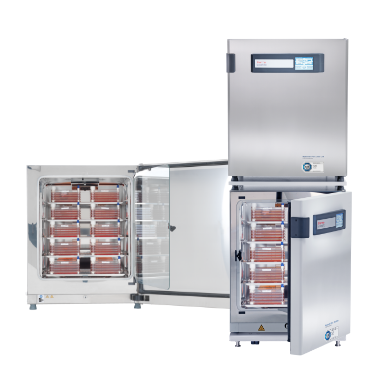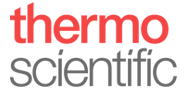Cleanroom-Compatible CO2 Incubators for Cell Therapy
Cell therapy process development and manufacturing requires improved technologies for CO2 incubators as well as other cleanroom equipment. These products must use materials optimized for stringent cleaning protocols and reduce the potential for microorganism and non-viable particulate contamination. CO2 incubators must also provide optimal growth conditions for patient cell samples and adjustable shelving configurations to maintain high throughput per footprint.
Important Considerations
Cleaning and Disinfection Compatibility
CO2 incubators with a brushed 304 stainless-steel exterior are recommended for cell therapy development and production. More resistant than a traditional painted steel exterior, this finish can tolerate chemical disinfectants and vaporized hydrogen peroxide (VHP) procedures.
Likewise, electropolished stainless steel components in the chambers have fewer microscopic structures that can become havens for microbial growth. Moisture resistant housings and casings (rated IP54) and silicone-sealed touchscreen displays protect the electronics and can tolerate common cleanroom protocols.
Low Particulate Emission and Microbial Contamination Prevention
Particulate management remains a primary concern in cell therapy manufacturing since cell-based products for human injection cannot be easily purified. Although not the only contaminant of concern, microbial contamination remains the number one reason for biological pharmaceutical recalls.
Choose a CO2 incubator that offers active particle control for ISO Class 5 and Grade A/B cleanroom environments. Your CO2 incubator should also offer contamination control as well as control parameters to help cells express their optimal characteristics and potency.
- In-chamber circulating fans provide fast recovery, improve uniformity following door openings, and offer in-chamber HEPA filtration
- Carefully designed air circulation systems help parameters recover within 10 minutes after a thirty-second door opening
- Combined air circulation and HEPA filtration will help you capture particulates of all sizes and reach ISO Class 5 conditions in five minutes or less
- On-demand dry heat sterilization cycle tested by an independent, third-party laboratory will help to verify that it reaches a 12-log sterilization assurance level (SAL)
- Multiple-point temperature mapping demonstrates consistency throughout the chamber
Certificates and Documentation
Certified cleanroom-compatible CO2 incubators are tested against ISO 14644-1 requirements and adhere to air quality limits within grade A/B cleanroom standards. In addition, each unit should undergo complete end-of-line testing. The manufacturer should also provide certificates and documentation to facilitate and support the audit process for on-site qualification, including:
- Product certificates, specifications, and materials of composition
- Factory acceptance test
- Clear guidance for cleaning, disinfecting, routine maintenance, accessory and part replacement, and expected performance
Optimized Space to Help Achieve High Throughput
CO2 incubators should accommodate appropriately sized culture vessels and produce an environment that promotes proper growth and the expression of desired receptors and optimum critical quality attributes (CQAs). Accessory incubator shelving systems can also help maximize limited incubator space, providing up to one and a half times more chamber capacity for higher output per footprint.
For more information, visit fishersci.com/co2-incubators.




